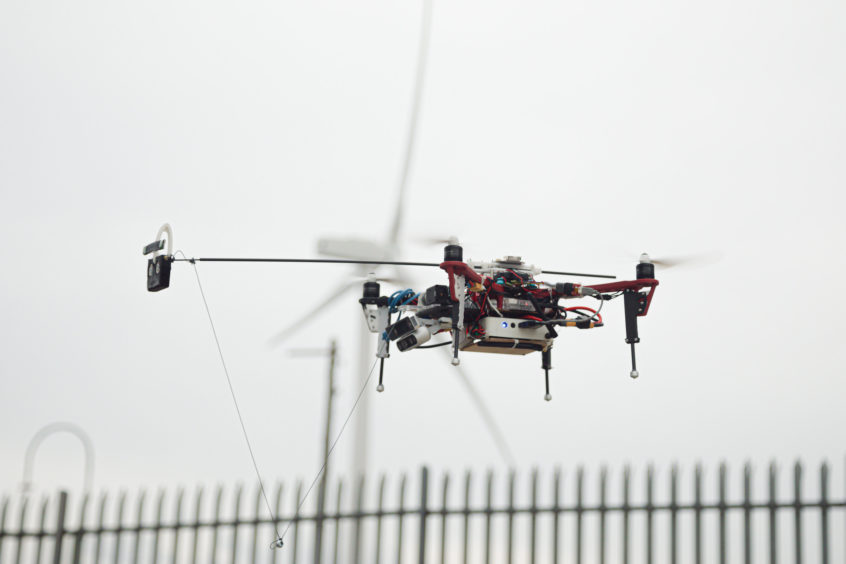
A consortium of five UK universities has unveiled new robot technology designed for the inspection, repair and maintenance of offshore energy assets.
The Orca Hub, a multi-million pound research collaboration that saw universities work with 35 industrial and innovation partners, aims to advance robotics and Artificial Intelligence (AI) technologies for use on North Sea renewable energy assets.
The hub is led by the Edinburgh Centre for Robotics, a partnership between Heriot-Watt University and the University of Edinburgh.
The consortium also includes Imperial College London, the University of Oxford and the University of Liverpool.
Unveiling the recent results at its third presentation to industry, the it showcased the application of 16 autonomous and semi-autonomous drone and robotic solutions at the Offshore Renewable Energy (ORE) Catapult’s base in Blyth, near Newcastle.
Mirko Kovac, director of the aerial robotics laboratory at Imperial College London, said: “Drones are currently used to visually inspect offshore wind turbines, but these inspections are remotely controlled by people on-site at the offshore location.
“Should an area of concern be found, technicians are required to carry out further inspection, maintenance or repair, often at great heights and therefore in high-risk environments.
“Our drones are fully autonomous. As well as visually inspecting a turbine for integrity concerns, ours make contact, placing sensors on the infrastructure, or acting as a sensor itself, to assess the health of each asset.
“Our technology could even deposit repair material for certain types of damage.”
Launched in 2017, the project forms part of the UK Government’s £93 million research and design funding on “Robotics and AI for Extreme Environments” through the Industry Strategic Challenge Fund (ISCF).
It is designed to boost safety, improve efficiency and support the environmental objectives of offshore energy infrastructure.
Chris Hill, operational performance director at ORE Catapult, added that the technology could “provide the UK with an unparalleled economic opportunity” and “enhance our world-leading position” in operating and maintaining offshore renewable energy assets.
Recommended for you
